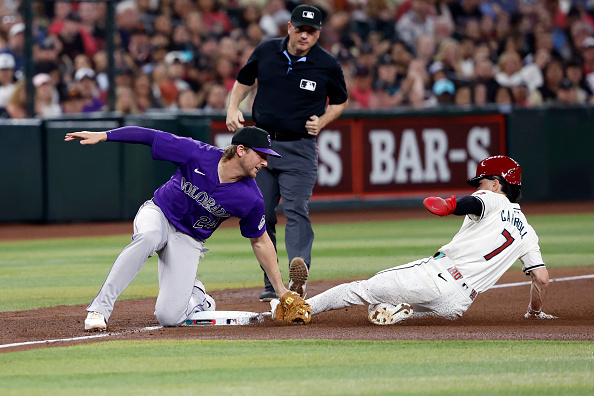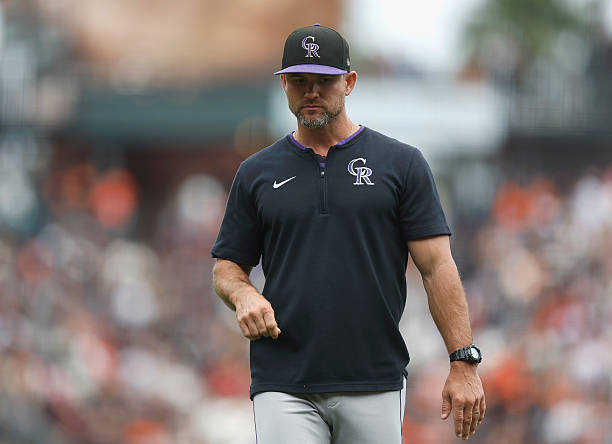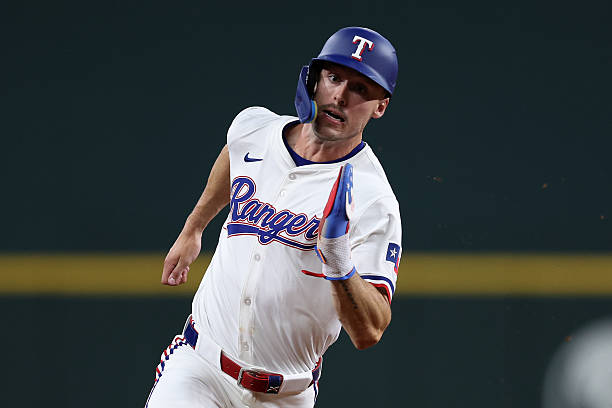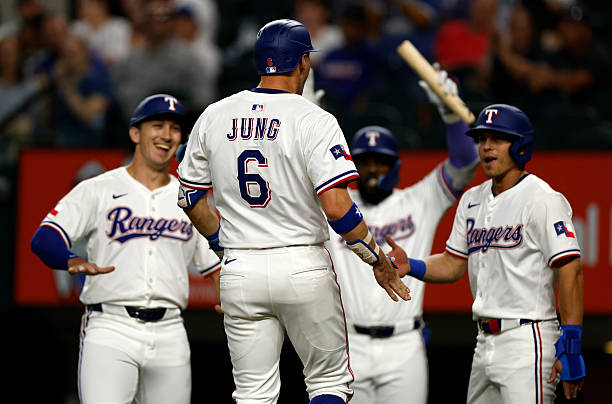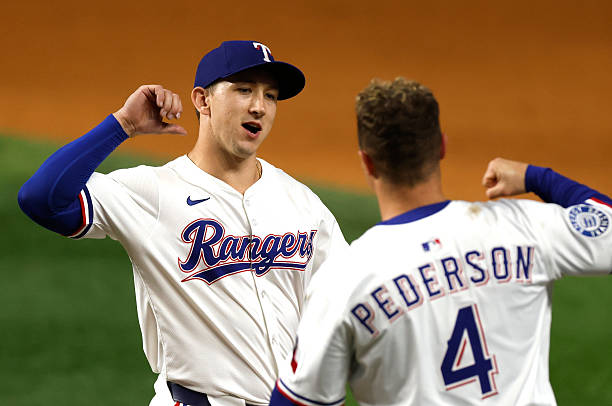How Infielders Are Avoiding Obstruction
PHOENIX, Mar. 31 — When Colorado Rockies catcher Elias Diaz gunned down Arizona Diamondbacks speedster Corbin Carroll Friday night on a steal attempt at third base, there was some dispute over whether he was safe or out. The Diamondbacks challenged, but replay was inconclusive, so the call stood. What was never in dispute, however, was the positioning of Rockies third baseman Ryan McMahon. McMahon was fully in accordance with the league’s new enforcement of the obstruction rule vis-à-vis infielders, giving Carroll a fair opportunity to reach the bag with his hand. He had placed his shin across the top of the bag rather than resting it on the ground in front of the bag, which fielders — including McMahon, by his own admission — have done in previous years.
“I’m just trying to figure out things that’ll make life easier. I didn’t try to do that,” he said, referring to the placement of his shin. “When the throw is low, typically infielders—you’ll see all of them drop down to a knee.”
Brendan Rodgers is no exception to that statement. “It feels the most comfortable, I’d say, and the safest,” the second baseman and 2022 Gold Glover said. He continued, “I don’t like straddling the bag because it would be hard to make an adjustment on a throw to my backhand. So I want to get there early enough to where I can drop my left knee on top of the bag and be able to maneuver around the bag from there.”
The New Mechanic
Both manager Bud Black and third base coach Warren Schaeffer, who doubles as the infield coach, said the infielders spent all spring training on it. “We do not want to get called for an obstruction,” Schaeffer said, “because they get the next base, specifically on a back-pick.” The new mechanic is for the infielder to feel the bag with his feet, know where he is, and set up accordingly, according to Schaeffer. “What we used to teach was in front of the bag, don’t touch the bag, and then the ball will take your foot naturally. It’ll drop back into the line. Can’t do that anymore. So you have to feel where you are with the bag and just put your foot on it. Your feet will tell you a lot.”
First Basemen and Back-picks
The back-picks Schaeffer mentioned refer to plays where a fielder throws behind a runner whom he feels has strayed too far off his base. Most commonly, this occurs when a catcher fires to first base after a pitch when the runner on first takes a large secondary lead. Left-handed first baseman Michael Toglia said this is the only situation where he has to be careful not to obstruct, because on a normal pickoff play from the pitcher, he’s already set up out of the way. “If I can, I’m gonna try to straddle (the bag),” Toglia explained. “If not, I’m just gonna stay in front of it, sweep (tag), and hope to get him.”
With Toglia being left-handed, his glove hand is on the side that faces the runner. But right-handed first baseman Kris Bryant has the glove on the opposite side, so he has to set his feet up differently. In addition, he has “never really dropped to a knee or tried to block the runner from getting to the base,” even when he played third. This is because he’s trying to avoid being spiked, which is an injury he feels is avoidable.
But there is another factor working to his advantage. “I have long arms, so I don’t really have to block. My arms are going to do the work.” And on back-picks, he said, “You have in your mind what is going to happen, so you can almost consciously think, ‘Hey, don’t block the bag. Straddle it,’ or whatever you have to do. Because you certainly don’t want to (obstruct), especially on a back-pick, because they get a free base. Then it defeats the purpose.”
Moving Ahead under New Obstruction Guidelines for Infielders
McMahon and Bryant both feel that once players get adjusted, obstructing won’t be much of an issue. But until then, there might be some obstruction calls that normally wouldn’t have happened. Bryant said, “Shortstops, second basemen who really do block the bag on stolen bases—that’s a big adjustment they’re gonna have to make. I’m sure we’ll see, in the first couple of months, a couple of those calls just because they’re falling back on habits that they’ve done their whole career.”
McMahon is “still trying to feel it out,” and he is certainly not alone. What he said about covering on the Carroll stolen base attempt is likely how multiple third baseman across the league felt or will feel the first time they cover. “It’s weird man,” he said. “I felt like I had to take two extra steps to get over there and get out of the way.”
More Colorado Rockies Articles
More General Baseball Articles
More MLB Articles
Main Photo
- Categories
-
Colorado Rockies
General Baseball

